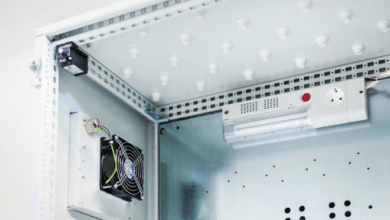The Supply Chain Tool Most Teams Underestimate

The Invisible Foundation of Fulfilment
Every supply chain relies on containers, but most teams obsess over software, shipping partners, and dashboards. That’s where the blind spot begins. Behind every scan and dispatch is a physical object doing the heavy lifting.
And that object is often neglected.
Boxes, pallets, and crates are dismissed as “just storage.” But they’re not. They affect speed, space, hygiene, stacking, and even how your workforce moves. The container isn’t just a vessel; it’s part of the system.
If your containers are inconsistent, your layout becomes inconsistent. That’s when delays creep in. Forklift drivers take longer routes. Pickers hesitate. Automation misfires. And suddenly, your highly optimized operation is bleeding efficiency at the seams, all because of what’s holding your goods together.
It’s easy to upgrade a scanner or route optimizer and feel productive. But upgrading your physical base and your containment strategy often delivers more real-world impact. Smart businesses don’t just digitize their process. They standardize what those processes depend on.
Most operational pain points in warehouses aren’t high-tech problems. They’re stacking problems. Space problems. Cleanliness problems. All of these begin with the foundation: the box, the pallet, and the crate. Ignore it, and everything above it gets shaky.
Crates, Pallets, Totes… and Boxes
Let’s get clear on terminology:
- Crates are rigid, open or lidded containers often used for heavy or oddly shaped items.
- Totes are smaller, lightweight bins meant for internal movement, think picking lines or order prep.
- Pallets form the flat base layer, allowing goods to be lifted and moved by forklift or jack.
- Pallet boxes combine the logic of all three, offering structure, containment, and stackability on a pallet footprint.
This hybrid function is where their true value shows up.
Think of a regional bakery delivering pre-portioned dough to franchises across the UK. They need containers that can be frozen, easily stacked in vans, and reused daily without crumbling under moisture or rough handling. Using open crates or cardboard would result in mess, hygiene risks, and repacking headaches. A single rigid, stackable unit makes their entire operation smoother, from proofing to point-of-sale.
Or take a manufacturer of speciality automotive parts. These parts can’t be crushed, scuffed, or exposed to dust. They’re sent in batches to various assembly locations. With proper containers, they can be protected during both short-term storage and long-distance transport, no bubble wrap, no added packaging, no extra labour. That’s where efficiency hides: in eliminating micro-tasks that add up to real cost.
Durable plastic pallet containers reduce touchpoints. That means fewer repack cycles, fewer risks of damage, and better space utilization in lorries and warehouses.
They’re not glamorous. But they solve the boring, recurring problems that silently eat away at profits, from damaged stock and delayed shipments to failed hygiene checks.
In short, when your container does more than “just hold things,” your logistics get leaner without trying harder.
Why “Just Use Whatever” Doesn’t Work Anymore
It’s tempting to use whatever containers are available, especially when speed or cost pressures are high. But this approach introduces hidden inefficiencies that compound quickly. Mismatched or poorly made containers cause stacking failures, damaged goods, and time-consuming repacking.
In a supply chain where every second and square metre matters, inconsistency creates drag. Delays occur. Mistakes multiply. And operational stress increases. Standardization in storage isn’t about making things neat; it’s about removing chaos. Choosing the right type and size of container sets the tone for everything else. Without it, warehouses fight their own systems.
This is why more operators are moving toward plastic pallet boxes, clean, stackable units that support real efficiency.
They don’t need to be fancy. They need to be functional. Consistency leads to repeatability, and that’s the foundation of scalable logistics.
Stacking Smarter = Fewer Trips
When pallet boxes are designed to stack higher and lock securely, they change the economics of shipping. Fewer trips are needed. Trucks run fuller. Floor space is used more effectively. These advantages aren’t just about transport, they affect loading times, space allocation, and manpower deployment.
Efficient stacking reduces the number of touchpoints required to move goods from A to B. Over time, it adds up to lower emissions, reduced labour fatigue, and clearer process flows. Teams gain time back. And in logistics, every minute recovered is a margin protected.
Cleanliness Without the Hassle
Hygiene in logistics isn’t optional anymore. Wood absorbs bacteria, gets soggy, and can’t be properly sanitized.
Plastic pallet boxes solve this. Their sealed surfaces resist moisture, wash clean, and pass inspections easily.
In industries like food, pharma, cosmetics, and health supplies, this isn’t a luxury. It’s a compliance requirement.
You don’t want storage that turns into a liability.
Why Some Warehouses Keep Breaking Stock
It’s not always the operator’s fault.
When containers are flimsy, non-uniform, or cracked, it leads to more:
- Product breakage
- Stock write-offs
- Disputes with clients over damaged goods
This kind of shrinkage is avoidable. Durable containers prevent cascading losses that start at the bottom of your stack.
Better boxes aren’t just safer. They make your people and processes look better too.
Standardizing Container Sizes for Automation
Automation relies on known dimensions. A system can only perform consistently if the components it moves, including containers, don’t vary. When box sizes fluctuate, machines jam, scanners misread, and conveyors halt.
Standard plastic pallet boxes ensure compatibility with pick-and-pack tools, shelf sorting, and robotic arms. Predictable input means less troubleshooting. Operators don’t need to override machines constantly. Inventory can be tracked faster. The entire process gains rhythm. And that rhythm is what scales.
Boxes That Pay for Themselves
Yes, better boxes come with a higher upfront cost. But in logistics, short-term savings often create long-term expenses, and this is one of the clearest examples.
These containers aren’t a consumable. They’re an asset. Unlike cheap alternatives that split, warp, or get binned after a few runs, high-quality boxes can be reused dozens, even hundreds, of times without performance drop-off. Over time, they reduce losses from product breakage, improve stacking efficiency, and speed up inventory handling.
Let’s do the math.
Say your warehouse processes 800 units a week. If you’re using flimsy or inconsistent containers, you might face a 2–3% damage rate due to collapse, spillage, or poor stacking. That’s 20–25 units a week, easily £300–£500 in losses depending on product value. Multiply that across 52 weeks, and you’re burning £15K+ per year without noticing.
Now factor in labour. Every time a picker has to repack, clean a spill, or handle irregular-sized packaging, it slows down your throughput. Even if it’s just 30 seconds per incident, across hundreds of touches per day, it adds up to hours of lost productivity per week.
Then there’s the hidden benefit: predictability. Reusable containers with uniform dimensions mean faster scan times, tighter truck loading plans, and simpler training for new staff. Predictability is speed. Speed is the margin.
One mid-size e-commerce fulfilment centre switched from mixed cardboard and wooden crate use to a standard, durable container setup. Within three months, they cut pick-pack errors by 40%, improved vertical stacking by 25%, and reduced packaging material waste by half. That wasn’t a flashy investment, it was a change in containers.
So while the initial investment might feel harder to justify than “just buying what’s cheap,” the financial case is rock solid once you zoom out.
Because when you stop thinking of these boxes as consumables, and start seeing them as infrastructure, they stop being a cost and start becoming a tool for margin.
Final Thought: Clean Up Your Container Strategy
You can’t scale a chaotic system. Inconsistent, poorly thought-out containers create chaos.
If your storage isn’t standard, your workflow isn’t either. Logistics teams that scale well fix the boring stuff first.
Because when the basics are clean, everything else flows faster.
And in the world of fulfilment, speed, predictability, and clarity always win.




